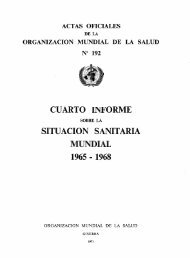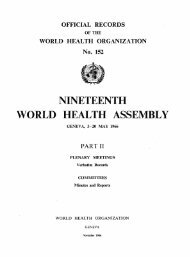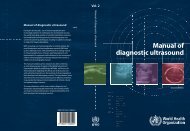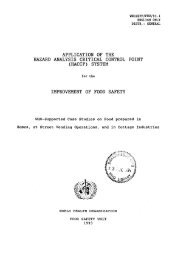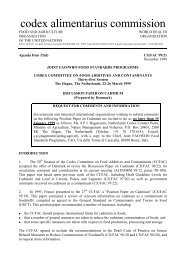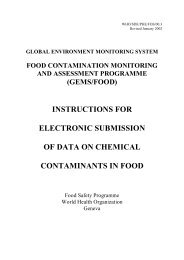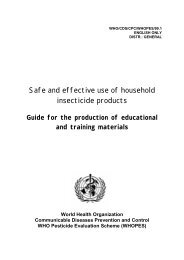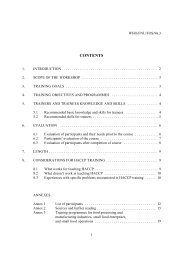IPV BSL-3/polio containment guidelines (Feb 2003) - World Health ...
IPV BSL-3/polio containment guidelines (Feb 2003) - World Health ...
IPV BSL-3/polio containment guidelines (Feb 2003) - World Health ...
Create successful ePaper yourself
Turn your PDF publications into a flip-book with our unique Google optimized e-Paper software.
c) a test for inactivation of <strong>polio</strong>virus as described for <strong>IPV</strong> production and<br />
approved by the national regulatory authorities has been completed and the<br />
results demonstrate that no residual live virus is present; or<br />
d) following a validated inactivation procedure a kinetic measurement of virus<br />
30<br />
inactivation has been completed with at least three time points, with the results<br />
of the last two time points indicating that there is no detectable live virus, and a<br />
measurement of the formalin concentration in each inactivation container has<br />
been conducted and the results indicate that the minimum validated<br />
concentration of formalin for inactivation is present. If materials are to be<br />
transferred thereafter to an area outside the <strong>BSL</strong>-3/<strong>polio</strong> <strong>containment</strong> area until<br />
such time as all tests of effective inactivation are completed, they must be stored<br />
in sealed, leak proof, unbreakable secondary storage containers.<br />
6.13 Blending, mixing, and formulation of <strong>IPV</strong> should not be conducted using virus<br />
preparations prior to the conclusion of all tests designed to verify inactivation.<br />
7. QUALITY CONTROL<br />
The risks from live <strong>polio</strong>virus in testing facilities will be different to those in the<br />
production facility. While the volumes of virus are smaller than in the production<br />
facilities, there are many more manual manipulations of samples and infected cell<br />
cultures containing viable <strong>polio</strong>viruses that are not contained in closed systems. In cases<br />
Adopted by the 53 rd meeting of the WHO Expert Committee on Biological Standardization, 17-21 <strong>Feb</strong>ruary <strong>2003</strong>. A definitive<br />
version of this document, which will differ from this version in editorial but not scientific detail, will be published in the WHO<br />
Technical Report Series.




